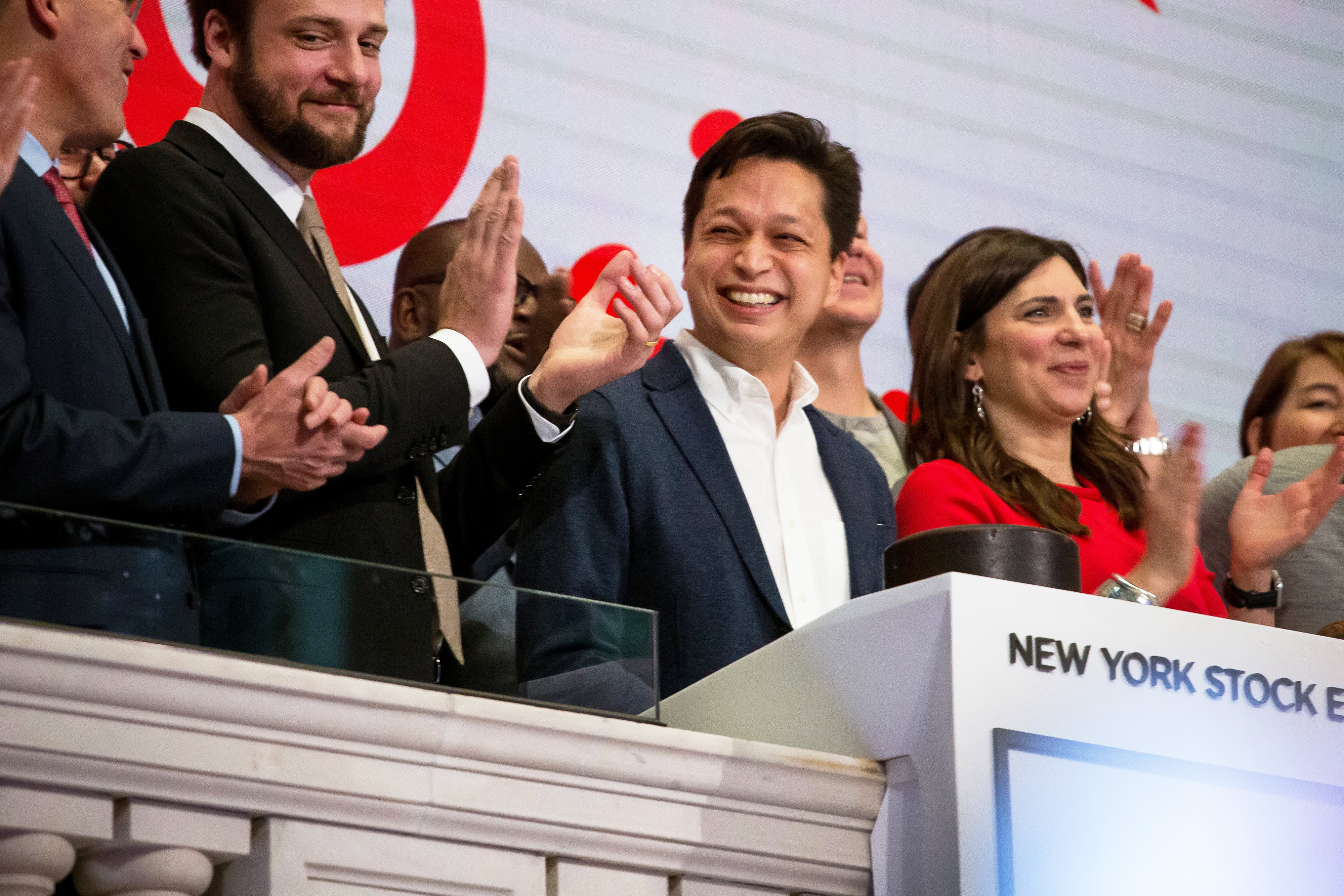Ben Silbermann, co-founder and chief executive officer of Pinterest Inc., center, rings the opening bell on the floor on the New York Stock Exchange during the company’s initial public offering (IPO) in New York, on Thursday, April 18, 2019.
Michael Nagle | Bloomberg | Getty Images
Pinterest is set to release its first quarterly earnings report as a public company after markets close on Thursday.
Here are the numbers analysts are expecting for Pinterest’s first quarter of 2019:
- Loss per share: 11 cents, according to Refinitiv consensus estimates
- Revenue: $200.6 million, according to Refinitiv
Pinterest has shown its strength among certain key demographics, but has had to work harder to expand beyond its core audience. The company revealed in its S-1 filing that it 80% of its total U.S. audience is comprised of moms ages 18-64, based on an independent Comscore study. It also claimed that more than half of U.S. millennials use its service.
The company has since begun making strides internationally, claiming “significant growth” in international MAUs over the past few years as it has focused on localizing content. Pinterest said in its IPO filing that it expects this demographic to continue to outpace U.S. user growth in the near term.
Pinterest said it had 80 million monthly active users in the U.S. in the first quarter of 2018, growing to 82 million in the last quarter of the year. Internationally, Pinterest counted 160 million monthly active users in the first quarter of last year compared to 184 million in the last quarter.
Still, U.S. users remain a larger source of revenue for Pinterest, generating an average revenue per user (ARPU) of $1.59 in the first quarter of 2018 and growing to $3.16 by the last quarter. International ARPU was 5 cents in Q1 2018 and grew to 9 cents in Q4 2018. For Pinterest’s first quarter of 2019, there were not enough analyst estimates to get a clear sense of expectations on MAU and ARPU growth.
Pinterest is much smaller than some of its social media peers, like Twitter, which counts more than 300 million MAUs and Facebook, which claims over 2 billion. But Pinterest’s leadership has resisted the label of social media in the first place, with CEO Benjamin Silbermann telling CNBC on the stock’s debut day that it was really “a utility.”
That mentality has kept Pinterest largely out of the focus of discussion about the spread of misinformation online as regulators narrow their sights on tech companies. Pinterest notably suspended search results for terms related to vaccination in February when it found out false anti-vaccine information was spreading on its service.
Still, Pinterest is very much dependent on other tech companies to keep its own operations running smoothly. The company disclosed that a change to Facebook’s login authentication system negatively impacted its user growth in the second quarter of 2018.
Watch: How Pinterest makes money by filling your feed with promoted pins
